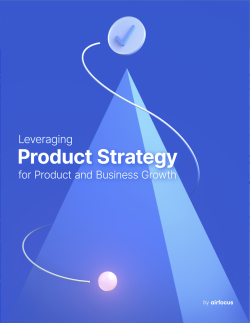Idea Management
What is Idea Management?
Definition of Idea Management
Idea Management within an organization can be described as a system, mechanism, framework, or structure, by which any concept, idea, suggestion, theory, design, or solution, can be captured and then assessed. This assessment will analyze the value of the idea, its viability, and its priority. The most effective system for Idea Management will also incorporate a means by which to encourage concept generation and will foster opportunities to discuss and develop. Fundamentally, due consideration will be given to how any ideas can improve current products or services, or even create new ones.
Why Use Idea Management?
Ideas and concepts are, ultimately, the lifeblood of any business. All products and services that have ever entered the marketplace, will have started as something much more rudimentary and intangible. And, many of them may not have materialized through regular channels but found light in unexpected ways. It is a poor business practice to have faith that a cutting edge idea will find its way into development. A savvy organization hunts for any facility that not only captures ideas but also actively encourages them to emerge.
The pace of modern technology and the forever shifting preferences of the consumer means a product-centric organization requires a steady flow of ideas to keep it robust. And the more effective an organization becomes in championing new concepts, the more competitive it will become. A considered and well maintained Idea Management System, therefore, is imperative.
Inspiration for ideas is a creative and unpredictable creature. It can appear at any time and may occur to anyone within the organization. It is certainly possible to lay down an itinerary or agenda for developing and manufacturing a product or service, but attempting to cater to that newly emerging concept - as it is born - is a far more difficult notion. It is critical to have a mechanism in situ to be able to cultivate, gather, and evaluate ideas as they coalesce so that no opportunities are lost, no new innovations are ignored, and no imaginative solutions are overlooked.
Ownership of the Idea Management System
A successful idea management system does not simply fall within the portfolio of a single individual or role. However, as the Product Manager carries with them the responsibility for much of the success or failure of the product, and because any product must begin its life as an idea, Product Managers usually take ownership of the system. This means not just devising an effective framework, but also making sure awareness of the system is filtered to every corner of the organization, and providing guidelines on how to use it.
What Should Go Into an Effective Idea Management System?
There are a number of elements worth considering when creating a system for the effective encouragement and aggregation of ideas across an organization:
A communal, clear, and well-placed mechanism for idea gathering The mechanism should be one that is highly collaborative. It should not only cater to individuals creating ideas on their own but should also make provision for multiple personnel to devise multiple ideas together. Perhaps obviously, the system needs to be highly transparent to all users regardless of their abilities or backgrounds. Clarity and transparency also mean creating a system in such a way that all personnel can view all contributions. Equally, the mechanism needs to be placed so that it is both highly visible and readily accessible. Typically, a mechanism for idea-collection will consist of shared digital folders or project management applications.
Provide direction around the nature of the ideas the organization will be prioritizing To be sure an organization is successfully harnessing the invention of its workforce, it must create a collection system that is flexible enough to be able to record unorthodox concepts as well as more traditional ones. Depending on the business and the size of the workforce, this can be a difficult balance to strike. Nonetheless, it is usually the Product Manager who will have the most abundant and up-to-date intelligence regarding the product itself as well as the marketplace. For example, the Product Manager will have a better understanding of the current needs of the consumer, or indeed, which products are looking to be retired. It will lie within their role then, to identify ideas that the organization should develop. Equally, it is good practice for the Product Manager to try to feed commercial intelligence back to the Idea Management system on a regular basis. This in itself can provide astute direction to an organization’s workforce, and channel the more appropriate ideas.
Inspiration should focus on both the grand and the modest Although it is important to garner ideas of the more ambitious or grandiose type, it is equally important to encourage those that are humbler and perhaps more simple. Where a big idea might look to create a seachange in an entire industry by proposing a whole new product, a modest one might only seek to alter a tiny feature in an existing product or service. The end result to the consumer can still be profound which, in turn, can prove to be a prudent business opportunity.
Brainstorm, measure, evaluate A pillar upon which a successful Idea Management System rests is in the assessing and analysis of the data. There can be no outcome without at least some investment in this step. So it is critical to the system to make sure to arrange discussions in order to assess the contributions of the organization’s staff. And, it is also useful to devise a way to quantify the overall value of the ideas so that identifying which ones to channel and potentially develop is made easier.
Foster an inspirational culture It is not enough to simply make the workforce aware of the Idea Management System. Staff should be actively encouraged to use it. Creating an idea-driven atmosphere is integral. Routes to achieving this lie in acknowledging all contributions to the system as well as clearly demonstrating how each of the ideas is processed. The team evaluating the idea may also want to take time to provide feedback to the originator. Further still, where an idea is taken into development, where possible, including the originator in the progression of the idea can not only be fulfilling for the member of staff but also help to advertise the progressive environment of the workplace to the rest of the workforce.
![What is Idea Management? What is Idea Management?]()
General FAQ

Glossary categories
Create effective product strategy

Experience the new way of doing product management









